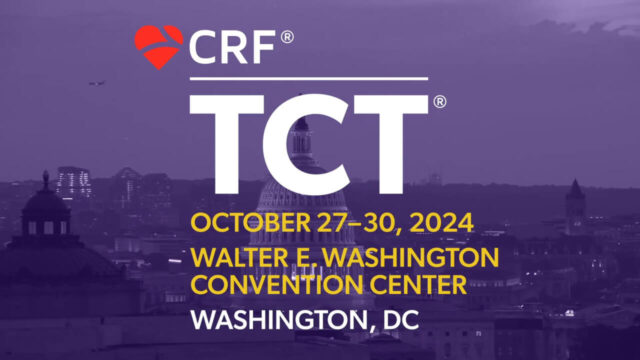The prevalence of aortic stenosis (AS) is on the rise in developed countries, and the link between moderate AS and cardiac failure (CF) with low ejection fraction presents a challenge when having to define a treatment strategy.

Even though guideline-directed medical therapy (GDMT) with maximal tolerated doses has shown benefits, the most effective strategy to reduce adverse events in this context remains unclear.
The TVAR UNLOAD (randomized, multicenter, superiority study) compared patients with moderate asymptomatic AS, CF, and low ejection fraction, treated with GDMT. In total, the study included 178 patients: 89 received TAVR with a femoral approach + GDMT and the rest GDMT alone.
The primary outcome was a combined event of all-cause mortality, disabling stroke, AS or CF related hospitalization, and changes in quality of life at one-year follow-up.
SAPIENS 3 was the most used valve, with a femoral approach.
Read also: TCT 2024 – EVOLVED Trial: Severe Aortic Stenosis and Myocardial Fibrosis.
Mean patient age was 77, 21 % were women, mortality STS was 4.4 %. 95 % were in functional class II-III, and 45 % had been hospitalized within the last year. As regards comorbidities, 76 % had coronary artery disease (CAD), 45 % MI history, 71 % had undergone coronary revascularization, 9% had suffered a stroke, 19 % had COPD, 51 % presented atrial fibrillation, 6 % had creatinine levels >2 mg/dl. Also, 35 % had an AICD, 10 % had a definite pacemaker and 6 % resynchronization therapy.
Mean ejection fraction was 39 %, mean gradient 19 mmHg, aortic valve area 1.2 cm², end diastolic volume 182 ml and end diastolic diameter was 66 mm.
There were no differences in medical treatment between the groups.
Primary end point did not show superiority of TAVR + GDMT vs GDMT alone (47 % vs. 36 %; win ratio 1.31 [CI 95 %: 0.91-1.88]; p = 0.143 for TAVR + GDMT and GDMT, respectively). Neither were there differences in all-cause mortality, disabling stroke, or AS/CF related hospitalization. However, there was a significant improvement in quality of life (12.8 ± 21.9 points vs. 3.2 ± 22.8 points; p = 0.018).
Read also: Evolution of Small Balloon-Expandable Valves.
At one year, TAVR Echo-Doppler showed a significant increase in ejection fraction (from 39.3 % ± 9.6 % to 44.2 % ± 9.7 %; p = 0.002), increased aortic valve area (from 1.1 ± 0.2 cm² to 1.8 ± 0.6 cm²; p < 0.0001) and gradient reduction (from 19.1 ± 6.0 mmHg to 9.3 ± 5.8 mmHg; p < 0.0001). GDMT only patients did not show changes in aortic valve area, even though they did show a higher gradient (from 18.2 ± 5.8 mmHg to 21.1 ± 8.6 mmHg; p = 0.038) and improved LV ejection fraction (from 38.3 % ± 8.1 % to 43.5 % ± 10.0 %; p = 0.0008).
At five years, there were no differences in primary end point (64.6 % vs. 80.5 %; p = 0.36; HR: 0.83 [CI 95 %: 0.56-1.24]) or all-cause mortality for TAVR + GDMT (61.9 % vs. 73.8 %; p = 0.92; HR: 0.98 [CI 95 %: 0.61-1.56]), respectively.
Conclusion
In patients with moderate AS and deteriorated ejection fraction, TAVR did not result superior to guideline-directed medical therapy for the primary outcome.
Original Title: Transcatheter Aortic Valve Replacement in Patients With Systolic Heart Failure and Moderate Aortic Stenosis. TAVR UNLOAD.
Reference: Nicolas M. Van Mieghem, et al. JACC. 2024. Article in press.
Subscribe to our weekly newsletter
Get the latest scientific articles on interventional cardiology





